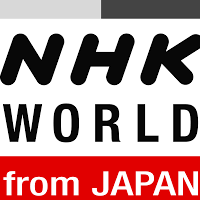「子ども が マスク を する とき は 体 の 具合 に 気 を つけて」
こども||ますく|||||からだ||ぐあい||き||
child|||||||body||condition||||to pay attention
Wenn Kinder Masken tragen, sollte man darauf achten, wie sie sich körperlich fühlen.
"Be careful about your physical condition when your child wears a mask."
Quando i bambini indossano le maschere, fate attenzione a come si sentono fisicamente".
“當你的孩子戴口罩時,要注意他們的身體狀況。”
新型 コロナウイルス の オミクロン 株 は 、子ども に も たくさん うつって います。
しんがた||||かぶ||こども|||||い ます
The new coronavirus Omicron variant is spreading a lot among children.
政府 は 、子ども が マスク を する とき は よく 気 を つけて ほしい と 言って います。
せいふ||こども||ますく||||||き|||||いって|い ます
|||||||||often|||to be careful||||
The government is saying that they want children to be very careful when wearing masks.
政府 は 、2歳 に なって いない 子ども は マスク を し ない ほう が いい と 言って います。
せいふ||さい||||こども||ますく||||||||いって|い ます
||||||||||||way|||||
The government is saying that children who are not yet 2 years old should not wear masks.
2歳 以上 の 子ども が マスク を する 場合 は 、正しく マスク を して いる か どう か より も 、息 が 苦しく ない か 、吐いたり 口 の 中 に 物 が 入って いたり し ない か など に 十分 気 を つける 必要 が ある と 言って います。
さい|いじょう||こども||ますく|||ばあい||まさしく|ますく|||||||||いき||くるしく|||はいたり|くち||なか||ぶつ||はいって|||||||じゅうぶん|き|||ひつよう||||いって|い ます
||||||||||correctly||||||||||breath||painfully|||vomiting|mouth||||object||entered|does not||||||sufficiently|||to pay attention||||||
In dem Bericht heißt es, dass Kinder ab zwei Jahren mehr darauf achten sollten, ob sie eine Maske tragen, als darauf, ob sie sie richtig tragen, und dass sie darauf achten sollten, nicht schwer zu atmen, sich zu übergeben oder Dinge in den Mund zu bekommen.
When children over the age of 2 wear masks, it's important to pay attention not only to whether they are wearing the mask correctly, but also to ensure that they are not struggling to breathe, and that they are not vomiting or have objects in their mouths.
子ども が し たく ない と 言ったら 無理 に マスク を さ せ ない こと も 大事です。
こども||||||いったら|むり||ますく|||||||だいじです
||し|want|not||said|impossible||||さ|let|not|||important
Wichtig ist auch, dass Sie Ihr Kind nicht zwingen, eine Maske zu tragen, wenn es das nicht möchte.
It is also important not to force children to wear masks if they say they don't want to.
部屋 の 中 で たくさんの 人 が いる 場合 は マスク を した ほう が いい です が 、大人 が 子ども を よく 見て 気 を つけ なければ なりません。
へや||なか|||じん|||ばあい||ますく||||||||おとな||こども|||みて|き||||なり ませ ん
room||inside|at|||||||||wore|方|||||adult||||often|watch|||should|must|must not
Es ist am besten, eine Maske zu tragen, wenn viele Menschen im Raum sind, aber Erwachsene müssen Kinder sorgfältig beobachten.
In situations where there are many people in a room, it is better to wear masks, but adults must closely monitor children and take care.
そして 、外 で 遊ぶ とき や 保育所 など で 昼寝 を する とき は マスク を し ない ように 言って います。
|がい||あそぶ|||ほいく しょ|||ひるね|||||ますく|||||いって|い ます
|outside||play|||daycare center||at|nap|||||||||||
And I tell them not to wear masks when playing outside or taking naps at daycare.

